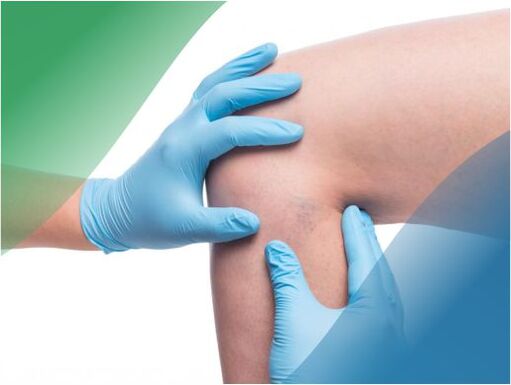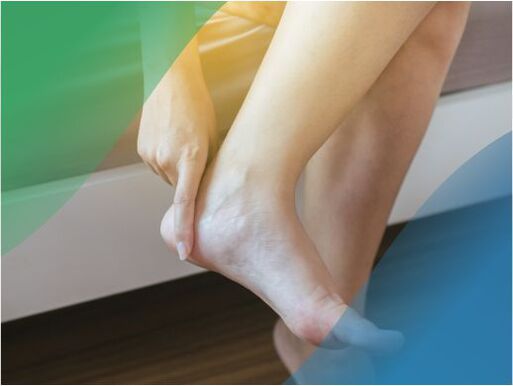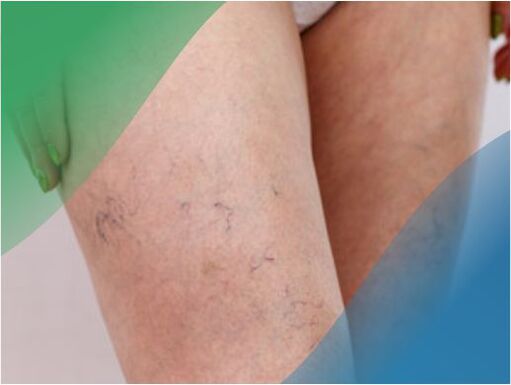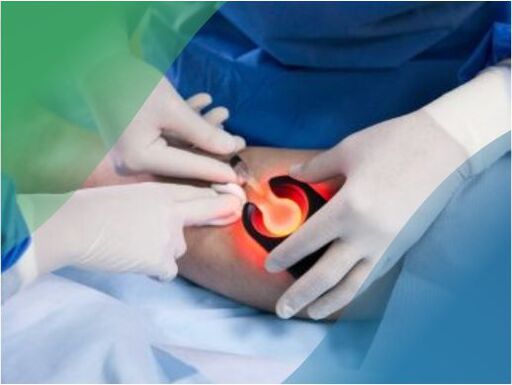
What do we think when we hear this word?varicose veins"? First of all, ugly legs are purple-blue, there are many papules on the skin, and a network of blood vessels is clearly visible through the skin. Many of us think of varicose veins as a cosmetic pathology. It is said that you can live with varicose veins on their own without special treatment. It is suggested that you can live with varicose veins for many years, this disease does not progress and does not lead to serious consequences, just a superficial defect. Unfortunately, this idea is not only wrong, but also dangerous.
To understand why varicose veins are dangerous, what are the ways to avoid it, why the disease must be treated if it is already present, and most importantly, how to do it, weconsulted a phlebotomist. We talk about the mechanism of onset of the disease, how to prevent it, the lifestyle features of this diagnosis, and modern management methods.
What is varicose veins?
,%20varicose%20veins%20(right).jpg)
Varicose veins are a disease known to mankind since ancient Egypt. Archaeological excavations confirm the presence of pathology among contemporaries of the pharaohs and the builders of the famous pyramids. Hippocrates and Avicenna, who are recognized as the best doctors of antiquity, are looking for a way to successfully treat varicose veins. What happens to varicose veins? Why does the disease happen?
Normally, in the human body, blood moves through the veins from the bottom up - from the tissues to the heart and lungs, and the contractions of the muscles help with this. But because of gravity, which affects all aspects of human existence, logically, liquids tend to go downwards. Special valves in our veins don't allow her to do this. They open in the direction of blood flow and close to prevent blood from flowing out. Thus, under the "sensitive guidance" of the valves that exist in the veins, blood will be directed to where it is needed.
But often, for some reason, the valves are disrupted, they don't close completely, and blood still flows down the veins. The vessels cannot contain all the blood, they stretch and protrude on the skin with nodules. Usually, the thin outer veins in the legs are affected in this way, and "varicose veins" occur.
Cause of disease
There are quite a few causes of varicose veins, and all of them are medically known.

- genetic predisposition.Heredity is one of the most common causes of the disease. Scientists have identified the so-called "varicose veins gene", which causes its appearance. Therefore, if your loved one has any problems with their veins, it is important to see a vein specialist as soon as possible. After all, the disease can manifest itself at any time, even at a very young age. Varicose veins are insidious in that the noticeable symptoms appear much later than the disease itself.
- Weakness of the vessel walls and valve device.Many chronic diseases (pyelonephritis, rheumatism, hepatitis, cirrhosis, . . . ), hormonal changes and metabolic disorders, unhealthy lifestyles, inactivity, lower extremity injuries, women takeHormonal birth control pills lead to this condition.
- Jobs that involve a long stay in a fixed position(standing or sitting). Programmers, drivers, hairdressers, salespeople, joiners, carpenters and many others are at risk for varicose veins.
- Pregnancy. Even if there is no genetic cause of the disease in the pathogenesis of the future mother, during pregnancy the risk of "earning" varicose veins increases significantly. Why did it happen? Synthetic "pregnancy hormone" acts on smooth muscle, dilates the tone of the venous wall. The volume of circulating blood increases, thereby increasing the pressure on the vessel walls and the valvular apparatus. A woman's rapid weight gain during pregnancy puts unusual pressure on her legs and, accordingly, on her veins.
- Excess weight.With excess weight, deformation of the vessel wall occurs due to heavy load, increased pressure on the vessel wall and pressure in the surrounding tissues. With excess weight, blood pressure rises, blood flow to the heart becomes difficult, and venous congestion occurs.
- Gender and age. According to statistics, more than 70% of cases of varicose veins of the legs occur in women of childbearing age. But cases are not uncommon in men, children and adolescents. Therefore, if any worrisome symptoms appear, it is necessary to consult a vein specialist, regardless of the sex and age of the patient.
Symptoms of the disease
As we said above, the disease in its early stages is asymptomatic or disguised as ordinary fatigue: after a day's work, the legs crack and swell, but in the morning or after a long rest, everything will disappear. There may also be convulsions at night, itching and burning in the lower extremities, a feeling of heaviness in the body. Such symptoms, as a rule, do not cause anxiety and are considered trivial overwork. The early stages of varicose veins do not reduce a person's physical activity, do not force him to change his lifestyle.
Later, with the development of the disease, the symptoms become more pronounced: a network of blood vessels and nodules appear on the lower extremities, swelling does not disappear even with long rest, severe pain appears afterWhen walking a short distance, force the sick person. changes in the normal rhythm of life, reducing physical activity to a minimum, leading to more serious blood stasis and, accordingly, more severe disease.
Why is varicose veins dangerous?

In addition to the obvious negative consequences of cosmetic defects and the inability to continue a normal life, varicose veins are very dangerous for their complications.
- Venous bleeding.It occurs because the normal connective tissue of the vessel wall gradually changes its properties, becoming fragile and inelastic. Even the slightest physical exertion (for example, coughing or sneezing) can lead to broken vessels and serious consequences in the form of bleeding.
- Eczema and dermatitis.Occurs due to impaired blood supply, prolonged lack of oxygen. On the skin of the extremities with varicose veins, small bubbles, scabs, crusts appear, accompanied by intense itching.
- Venous thromboembolism.This is a severe chronic disease characterized by inflammation of the veins of the lower extremities, accompanied by the appearance of blood clots in the lumen. In most cases, thrombophlebitis occurs as a result of varicose veins. The disease is accompanied by an increase in body temperature up to 38-39 ° C, acute arch pain in the affected area, persistent edema and complete limitation of motor activities.
- Necrosis and trophic ulceration.One of the most serious complications of varicose veins. Such a pathological process occurs against the background of thrombophlebitis, when, as a result of an inflamed varicose vein, metabolism is disturbed and tissues are subjected to prolonged oxygen starvation. As a result, areas of dead cells appear on the surface of the skin, eventually turning into a large ulcer. Nutritional ulcers are difficult to treat, the average duration of treatment for such ulcers and necrosis is 3-4 months.
- Thrombosis.The most dangerous complication of varicose veins. This pathological condition is characterized by the formation of blood clots in the deep veins, which disturbs blood flow. Deep vein thrombosis is first and foremost dangerous because during the most normal of family activities, the clot can break off, resulting in a blockage of the pulmonary artery or other vital vessels and death. The presence of deep vein thrombosis is synonymous with lifelong limitation of the patient's mobility.
It should be borne in mind that all serious consequences of varicose veins occur on the basis of lack of treatment or due to improper treatment of the disease.
How to treat varicose veins?

The disease is difficult to treat and in 80% of cases will recur even with careful and adequate treatment, as the deformed vessels will not be able to return to their former shape in any case. But you need to treat varicose veins! Because the severe stage of the disease can lead to severe consequences, even death. The combination of modern methods of treatment and prevention of varicose veins can prevent the development of the disease and the occurrence of serious complications. Modern medicine offers several ways to deal with this disease.
- Compression therapy.It is done with the help of special compression underwear. The basis of therapy is the creation of pressure in the lower extremities. As a result of such treatment, venous circulation improves, valve functions are restored, excess fluid is eliminated, venous pressure in the legs is reduced several times, joints become more mobileand the blood flow rate increases. Compression therapy can be used as a standalone treatment and in addition to other varicose veins treatments. Compression underwear is only prescribed by a doctor!
- Medical therapy.The drug is prescribed by doctors to relieve the symptoms of the disease, reduce the viscosity of the blood, improve the elasticity and regeneration of blood vessels, increase metabolism and prevent the formation of blood clots.
- Therapy therapy.This is an advanced and minimally invasive technique, without a doubt, the advantage is not only very good aesthetic effect but also markedly reducing the symptoms of the disease. To date, sclerotherapy is one of the most effective ways to combat varicose veins and related dysfunctions. This procedure involves the introduction of special solutions with a syringe with a thin needle into the damaged vein. The injections stick the blood vessels together, thereby stopping blood flow in them. This is the main goal of the operation - to remove the problem area from the general circulation.
- Surgical intervention.It is indicated at stages when the disease significantly impairs the quality of life and threatens the development of dangerous complications. Surgical intervention in most cases involves several different approaches at the same time, the main goal of which is to relieve the symptoms of the disease, improve the patient's quality of life, and prevent the development of complications. symptoms.
There are quite a few effective ways to treat varicose veins in modern medicine. The main thing that doctors call for: do not self-medicate! When the first unpleasant symptoms appear, such as heaviness and pain in the legs, nocturnal cramps, vascular network formation and others, consult a phlebologist (physician). vascular surgery). The doctor will conduct an examination and, if necessary, prescribe further examination and treatment.












































